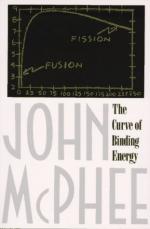|
This section contains 675 words (approx. 3 pages at 300 words per page) |

|
All matter in the universe is composed of atoms. Atoms, in turn, are comprised of differing combinations of subatomic particles. The subatomic composition of an atom determines which element it is, and therefore what physical and chemical properties it has. The subatomic construction of an atom is comprised of three particles. Protons are the positively charged particles that reside in the nucleus (the massive center of an atom). Neutrons carry no charge and also are found in the nucleus. Electrons are small, negatively charged particles, having almost no mass and moving with great velocity within shells that surround the nucleus of the atom. The individual masses of these three subatomic particles have been deduced by scientists and are standard constants. Together, the combination of protons, neutrons, and electrons constitute the entire mass of an atom, the bulk of which is found in the nucleus.
Because the...
|
This section contains 675 words (approx. 3 pages at 300 words per page) |

|


